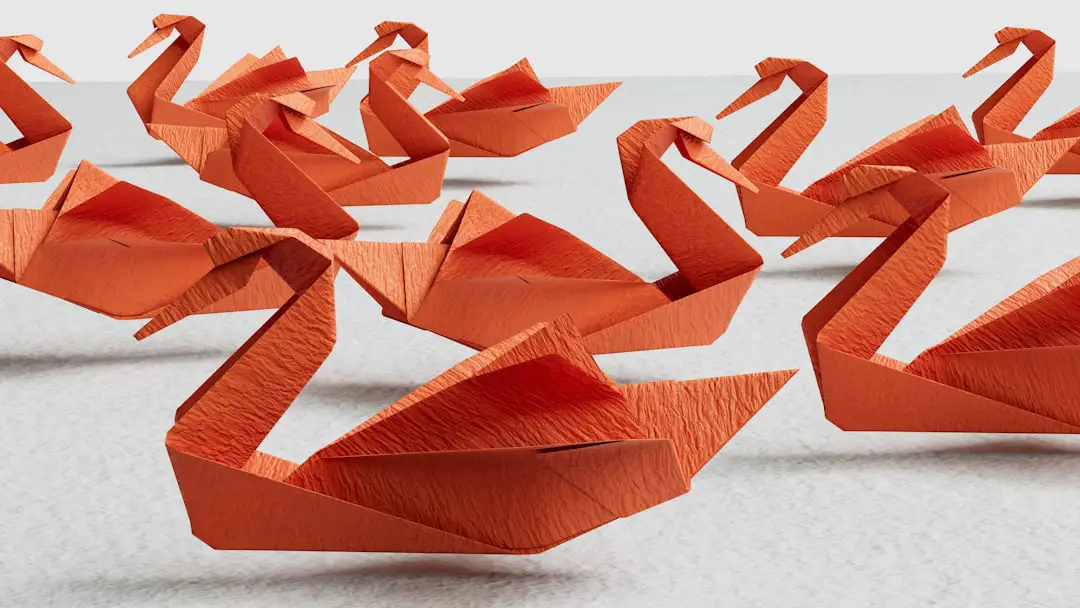Support our educational content for free when you purchase through links on our site. Learn more
Which Industries Use 3D Printing in 2024? 🚀
Did you know that 3D printing is revolutionizing industries across the board? From aerospace to automotive, this cutting-edge technology is transforming the way we design, manufacture, and create. In this article, we’ll explore the top industries that are utilizing 3D printing in 2024 and delve into the exciting possibilities it offers. So, buckle up and get ready to discover the incredible world of 3D printing!
Quick Answer: Industries Utilizing 3D Printing in 2024
- Aerospace 🛩️
- Medical Devices and Dentistry 🏥
- Mechanical Engineering ⚙️
- Automotive 🚗
- Tool-making 🔧
- Fashion and Jewelry 💎
- Architecture and Construction 🏗️
- Education 🎓
- Food 🍔
- Entertainment and Gaming 🎮
Now, let’s dive into each industry and explore how they are leveraging the power of 3D printing to innovate and excel.
Quick Tips and Facts
- 3D printing, also known as additive manufacturing, is the process of creating three-dimensional objects by layering materials based on a digital model.
- The global 3D printing market is projected to reach $51.77 billion by 2026, with a compound annual growth rate (CAGR) of 25.8% from 2021 to 2026.
- 3D printing offers numerous advantages, including cost savings, design flexibility, rapid prototyping, and reduced waste.
Aerospace 🛩️
The aerospace industry has been at the forefront of 3D printing adoption for years. With its ability to create complex geometries and lightweight structures, 3D printing has revolutionized aircraft design and manufacturing. Here’s how the aerospace industry is utilizing 3D printing:
✅ Lightweight Design: Weight reduction is crucial in the aerospace industry to improve fuel efficiency and reduce costs. 3D printing allows for the creation of intricate lattice structures that are both lightweight and strong.
✅ Rapid Prototyping: 3D printing enables aerospace engineers to quickly iterate and test new designs, reducing development time and costs.
✅ Customization: Additive manufacturing allows for the production of highly customized components, such as turbine blades, that are tailored to specific aircraft requirements.
✅ Supply Chain Optimization: 3D printing can reduce the reliance on complex supply chains by producing parts on-demand, minimizing inventory and lead times.
Medical Devices and Dentistry 🏥
The medical industry has embraced 3D printing for a wide range of applications, from prosthetics to surgical tools. Here’s how 3D printing is transforming medical devices and dentistry:
✅ Customization: 3D printing enables the production of patient-specific medical devices, such as prosthetics and implants, for better fit and functionality.
✅ Faster Recovery: Custom implants created through 3D printing can lead to faster recovery times and improved patient outcomes.
✅ Surgical Planning: Surgeons can use 3D-printed models of patients’ anatomy to plan complex surgeries and improve surgical precision.
✅ Bioprinting: Researchers are exploring the use of 3D printing to create living tissues and organs, opening up new possibilities for regenerative medicine.
Mechanical Engineering ⚙️
Mechanical engineering encompasses a wide range of industries, including manufacturing, robotics, and automation. Here’s how 3D printing is revolutionizing mechanical engineering:
✅ Rapid Prototyping: 3D printing allows engineers to quickly iterate and test new designs, reducing development time and costs.
✅ Complex Geometries: Additive manufacturing enables the creation of intricate and complex parts that would be challenging or impossible to produce using traditional manufacturing methods.
✅ Custom Tooling: Manufacturers can use 3D printing to create custom jigs, fixtures, and tooling, improving efficiency and reducing costs.
✅ Functional Prototypes: 3D printing can produce functional prototypes that closely resemble the final product, allowing for thorough testing and validation.
Automotive 🚗
The automotive industry is no stranger to innovation, and 3D printing is no exception. While the adoption of 3D printing in automotive manufacturing is still growing, it holds immense potential. Here’s how 3D printing is making its mark in the automotive industry:
✅ Rapid Prototyping: 3D printing enables automotive designers to quickly iterate and test new designs, reducing development time and costs.
✅ Customization: Additive manufacturing allows for the production of customized parts, such as interior components and personalized accessories.
✅ Lightweighting: 3D printing enables the creation of lightweight structures, reducing vehicle weight and improving fuel efficiency.
✅ Spare Parts: 3D printing can be used to produce spare parts on-demand, reducing inventory costs and lead times.
Tool-making 🔧
The tool-making industry plays a crucial role in manufacturing, providing the necessary equipment and tools for various industries. Here’s how 3D printing is transforming tool-making:
✅ Complex Cooling Designs: 3D printing allows for the creation of intricate cooling channels in mold inserts, improving efficiency and reducing scrap rates.
✅ Customization: Additive manufacturing enables the production of custom tooling and fixtures tailored to specific manufacturing needs.
✅ Reduced Lead Times: 3D printing can significantly reduce lead times for tooling production, improving overall manufacturing efficiency.
✅ Innovative Designs: Tool-makers are exploring new design possibilities with 3D printing, such as conformal cooling, which improves part quality and reduces cycle times.
Fashion and Jewelry 💎
The fashion and jewelry industries are embracing 3D printing to push the boundaries of design and manufacturing. Here’s how 3D printing is revolutionizing fashion and jewelry:
✅ Complex Geometries: 3D printing allows designers to create intricate and unique jewelry pieces that would be challenging or impossible to produce using traditional methods.
✅ Customization: Additive manufacturing enables the production of personalized jewelry and accessories tailored to individual preferences.
✅ Sustainable Manufacturing: 3D printing reduces material waste compared to traditional manufacturing methods, making it a more sustainable option for the fashion and jewelry industries.
✅ Rapid Prototyping: Designers can quickly iterate and test new designs, reducing time to market and enabling faster product development cycles.
Architecture and Construction 🏗️
The architecture and construction industries are embracing 3D printing to revolutionize the way we build structures. Here’s how 3D printing is transforming architecture and construction:
✅ Complex Structures: 3D printing enables the creation of complex architectural designs and structures that would be challenging or impossible to build using traditional methods.
✅ Cost Savings: Additive manufacturing can reduce construction costs by optimizing material usage and minimizing waste.
✅ Sustainable Construction: 3D printing allows for the use of eco-friendly materials and reduces the carbon footprint associated with traditional construction methods.
✅ Rapid Prototyping: Architects and designers can quickly create scale models and prototypes, enabling better visualization and communication of design concepts.
Education 🎓
3D printing is becoming an essential tool in educational settings, empowering students and educators to bring their ideas to life. Here’s how 3D printing is enhancing education:
✅ Hands-on Learning: 3D printing provides a hands-on learning experience, allowing students to design and create physical objects.
✅ STEM Education: 3D printing integrates seamlessly with STEM (Science, Technology, Engineering, and Mathematics) education, fostering creativity, problem-solving, and critical thinking skills.
✅ Prototyping and Design: Students can prototype and iterate their designs, turning abstract concepts into tangible objects.
✅ Career Readiness: By learning 3D printing, students gain valuable skills that are in high demand in various industries, preparing them for future careers.
Food 🍔
Yes, you read that right! 3D printing has even made its way into the food industry, offering exciting possibilities for culinary innovation. Here’s how 3D printing is transforming the way we prepare and present food:
✅ Customization: 3D printing allows chefs and food enthusiasts to create intricate and personalized food designs, catering to individual tastes and preferences.
✅ Creative Presentations: Additive manufacturing enables the creation of visually stunning food presentations that push the boundaries of culinary art.
✅ Nutritional Control: 3D printing can be used to precisely control the composition and nutritional content of food, catering to specific dietary needs.
✅ Sustainable Food Production: 3D printing reduces food waste by using precise amounts of ingredients, making it a more sustainable option for food preparation.
Entertainment and Gaming 🎮
The entertainment and gaming industries are leveraging 3D printing to create immersive experiences and bring virtual worlds into the physical realm. Here’s how 3D printing is enhancing entertainment and gaming:
✅ Character and Prop Creation: 3D printing allows for the creation of highly detailed and accurate replicas of characters and props from movies, TV shows, and video games.
✅ Collectibles and Merchandise: Fans can own their favorite characters and game items in the form of 3D-printed collectibles and merchandise.
✅ Customization: 3D printing enables gamers to create personalized accessories, such as custom controller grips or unique gaming figurines.
✅ Prototyping and Design: Game developers can use 3D printing to create physical prototypes of game assets, facilitating the design and development process.
FAQ

What industries use 3D printing?
The industries that use 3D printing span a wide range, including aerospace, medical devices and dentistry, mechanical engineering, automotive, tool-making, fashion and jewelry, architecture and construction, education, food, and entertainment and gaming.
Read more about “Top Selling 3D Printed Items on Etsy … 🚀”
Where is 3D printing mostly used?
3D printing is used globally across various industries. However, some of the leading countries in 3D printing adoption include the United States, Germany, China, Japan, and the Netherlands.
Who uses the 3D printer the most?
While many industries utilize 3D printing, the aerospace and medical industries are among the top users of this technology. These industries benefit greatly from the design flexibility, customization, and rapid prototyping capabilities offered by 3D printing.
Read more about “What are most 3D printed objects made of today? … ��️”
What company is using 3D printing?
Numerous companies across different industries are utilizing 3D printing. Some notable examples include Airbus in the aerospace industry, Align Technology in the dental industry, and General Electric in the manufacturing sector.
Read more about “Are there any drawbacks of 3D printing? … 💡”
Conclusion

In conclusion, 3D printing is transforming industries across the board, from aerospace to entertainment and gaming. The possibilities offered by this technology are endless, enabling customization, rapid prototyping, and cost savings. Whether it’s creating lightweight aircraft components, personalized medical devices, or intricate jewelry designs, 3D printing is revolutionizing the way we design, manufacture, and create. So, embrace the future and explore the exciting world of 3D printing!
Recommended Links
- Beginner’s Guide to 3D Printing
- Industry News on 3D Printing
- Explore 3D Printable Objects
- Commercial 3D Printing Projects
- Discover Free 3D Models
- Top Selling 3D Printed Items on Etsy 2024 🚀


